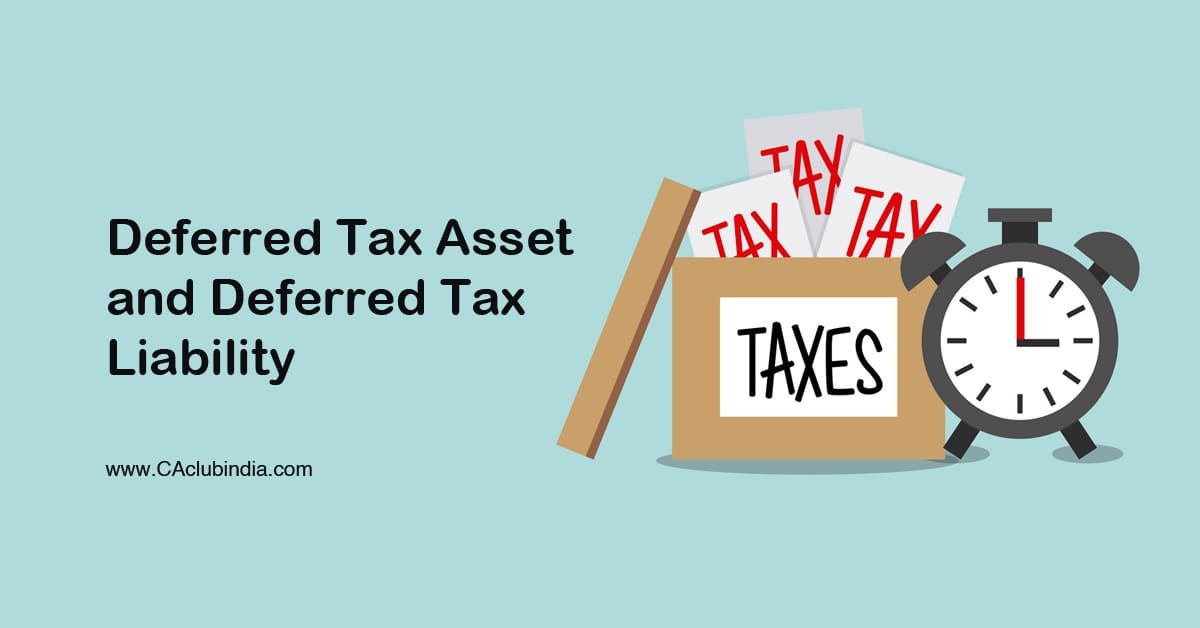The taxable profits are calculated as per the provisions of income tax laws and the book profits are calculated from the financial statements prepared in accordance with the rules of Companies Act. Taxes on income are considered as expenses incurred by the enterprises in earning the income and are accrued in the same period as revenue and expenses to which they relate. Such matching may result in timing differences and can be classified as-
- Permanent Difference
- Temporary Difference
Permanent Difference
Permanent difference is a difference between the tax expense and tax payable caused by an item which are not reversed over time. As this difference will never be eliminated, this tax difference does not create deferred tax assets or deferred tax liability. Examples of permanent differences are penalties and fines.
Temporary Difference
Temporary Difference is a difference between the tax expense and tax payable caused by an item which are reversed over time. The tax effects of temporary differences are included in the tax expense in the statement of profit and loss and as deferred tax assets or deferred tax liabilities in the balance sheet as under-

|
Scenario |
Profit Status of Enterprise |
Current effect on Taxes |
Future effect on Taxes |
Deferred Tax Asset/Deferred Tax Liability |
|
1 |
Book Profit is higher than taxable profit |
Pay Less Tax |
Pay Higher Tax |
Deferred Tax Liability |
|
2 |
Taxable profit is higher than Book Profit |
Pay Higher Tax |
Pay Lower Tax |
Deferred Tax Asset |
The examples of temporary differences are Depreciation, provision of bad debts etc
Virtual Certainty
With respect to timing differences related to unabsorbed depreciation or carry forward of losses under tax laws, deferred tax assets should be recognised only to the extent that there is virtual certainty supported by convincing evidence that sufficient future taxable income will be available against which such deferred tax assets can be realised.Virtual certainty is a matter of judgement based on convincing evidence and will have to be evaluated on a case to case basis.
Virtual certainty refers to the extent of certainty, which, for all practical purposes, can be considered certain. It cannot be based merely on forecasts of performance such as business plans. Virtual certainty is not a matter of perception and is to be supported by convincing evidence.To be convincing, the evidence should be available at the reporting date in a concrete form.
Deferred Tax Asset
As stated above, deferred tax assets arise when taxable profit is higher than book profit. Let us understand this in detail by taking the example of provision of bad debts.
Suppose the revenue of an entity is Rs. 1,00,000/- and provision for bad debts of Rs. 20,000/- . The tax payable as per books is calculated as follows:
|
Particulars |
Amount (Rs) |
|
Revenue |
100000 |
|
Less: Provision for Bad Debt |
-20000 |
|
Profit as per books |
80000 |
|
Tax payable at 30% |
24000 |
For the purpose of tax profit, bad debts will be allowed in future when it’s actually written off. The tax payable as per Income Tax Laws is calculated as follows:
|
Particulars |
Amount (Rs) |
|
Profit as per books |
80000 |
|
Add : Provision for Bad Debt |
20000 |
|
Taxable Profit |
100000 |
|
Tax payable at 30% |
30000 |
Due to temporary timing differences, the entity is now paying an additional tax of Rs. 6,000/-. For the additional tax paid, Deferred Tax Asset is created by passing the entry-
Deferred Tax Asset A/C- Dr Rs.6,000
To Deferred Tax expense A/C Rs.6,000
(being deferred tax asset of Rs. 6,000 accounted in books)
From the above it is clear that deferred tax assets mean a situation when the entity pays more tax in the present when compared to the future.
Deferred Tax Liability
Now that we have understood Deferred tax assets, let us understand deferred tax liability with the help of an example of depreciation. Deferred tax liability arises when book profit is higher than the taxable profit.
Suppose an entity has an income of Rs. 1,00,000/- before depreciation and the depreciation as per Companies Act is Rs. 20,000/-. The tax payable as per books is calculated as follows-
|
Particulars |
Amount (Rs) |
|
Revenue |
100000 |
|
Less: Depreciation as per Companies Act |
-20000 |
|
Profit as per books |
80000 |
|
Tax payable at 30% |
24000 |
The tax payable as per Income Tax is calculated is as follows-
|
Particulars |
Amount (Rs) |
|
Revenue |
100000 |
|
Less: Depreciation as per Income Tax Act |
-30000 |
|
Profit as per books |
70000 |
|
Tax payable at 30% |
21000 |
Due to temporary timing differences, the entity is now paying lower tax of Rs. 3,000/-. For the lower tax paid, Deferred Tax Liability is created by passing the entry-
Deferred Tax Expense A/C- Dr Rs.3,000
To Deferred Tax Liability A/C Rs.3,000
(being deferred tax liability of Rs. 3,000 accounted in books)
From the above it is clear that deferred tax liability means a situation when the entity pays lower tax in the present when compared to the future.
Tax Holiday with respect to Deferred Tax Asset and Deferred Tax Liability
The deferred tax in respect of timing differences which reverse during the tax holiday period is not recognised to the extent the enterprise’s gross total income is subject to the deduction during the tax holiday period as per the requirements of sections 80-IA/80- IB of the Income-tax Act, 1961. In case of sections 10A/10B of the Act , the deferred tax in respect of timing differences which reverse during the tax holiday period is not recognised to the extent deduction from the total income of an enterprise is allowed during the tax holiday period as per the provisions of the said sections.
Deferred tax in respect of timing differences which reverse after the tax holiday period is recognised in the year in which the timing differences originate.
Here is an example to understand the same-
A Ltd. established as a tax-free entity in 2018 under section 10A, hence it will be exempt from tax from 2018 to 2028. It has a timing difference on account of depreciation as follows: (Assume tax rate is 30%)
|
Year |
Timing Difference – Depreciation |
|
1 |
2,00,000 |
|
2 |
3,00,000 |
In the case of tax-free companies, deferred tax liability is not recognised, for the timing differences that originate and reverse in the tax holiday period. Deferred tax liability is created only when the timing differences originate in the tax holiday period and reverse after the tax holiday. Adjustments are done on the basis of the FIFO method. Suppose in the above example of the Rs 200,000, Rs 80,000 reverses within the tax holiday period, so DTL is created only on the balance. DTL will be created as given below:
|
Year |
Timing difference |
DTL @ 30% |
|
1 |
120,000 (200,000-80,000) |
36,000 |
|
2 |
300,000* |
90,000 |
*Fully reversed after the tax holiday period.
The total DTL balance at the end of the second year will be 126,000.
Effect of Deferred Tax Asset/ Deferred Tax Liability on MAT
As per section 115JB of Income Tax Act, while calculating book profit the following shall be considered in relation to deferred tax:
- Increase the book profit by the amount of Deferred Tax and Provision thereof
- Reduce the book profit by the amount of deferred tax, if any such amount is credited to the profit and loss account.
Consideration of MAT credit as Deferred Tax Asset as per AS 22
As per AS 22 deferred tax assets and liability arise due to the difference between book income & taxable income and do not rise on account of tax expense itself. MAT does not give rise to any difference between book income and taxable income. It is not appropriate to consider MAT credit as a deferred tax asset in accordance with AS 22.








 CAclubindia
CAclubindia

